The way we pay for goods and services is changing every year. In certain situations, we are now able to pay with our phones by simply sending an email, text, or by using an app such as Venmo. While electronic payments are convenient and the way of the future, there is still nothing more widely accepted than cold hard cash.
Plan on Using Cash When Traveling to These Countries
I recommend carrying a mix of currency with you at all times when traveling internationally. This includes a credit card with no foreign transaction fees, an ATM card that will reimburse you for any ATM fees, such as from Schwab bank or Fidelity, and of course, good ol’ cash. It’s important to always have some local currency on hand for any small tips or those hidden gem restaurants or shops that only accept cash. ATM machines almost always spit out large denominations so try withdrawing an odd number to get smaller bills or ask to change some of the notes for smaller amounts at a bank or currency exchange.
It’s also a good idea to bring some U.S. dollars or another strong currency such as the Euro so you can exchange cash in case you are unable to find an ATM or happen to forget your ATM card in the machine. I’ve made this mistake a few times before and it can sometimes take a few days to get your card back from the bank, if at all. Luckily, I’ve always had some USD stashed away and was able to exchange cash to get me by until I got my card back.
If you’re traveling to a Nordic country such as Sweden or Norway, you may find a lot of places that don’t accept cash. For pretty much the rest of the world, you’ll often come across vendors that are cash only, which is why I still believe that cash is king in the majority of the world. Of course, credit/debit cards are also widely accepted, but I’ve found that there are many countries where your options are limited if you stick to a card-only diet in your wallet. Here are seven countries where you may find that you’re pulling more paper than plastic from your wallet.
Cuba
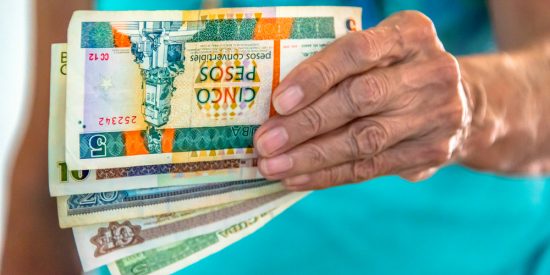
BobNoah / Shutterstock
Get ready for a trip back in time. From vintage cars to a lack of internet, you’ll feel as though you are no longer living in the modern world. And if you hold a card issued by a U.S. bank, it will not work in Cuba. While there is one exception with Stonegate Bank in Florida now issuing debit cards for use in Cuba, it is still not practical to use for payments in Cuba as many vendors are not set up to accept this card. You should bring enough cash with you for your entire trip, and it’s a good idea to bring some extra just in case you go over budget.
If you have access to Euros or Canadian dollars, you’ll get a better exchange rate, because there is an extra 10% charge levied on U.S. dollars. There are two types of currencies in Cuba. The Convertible Peso (CUC) and the Cuban Peso (CUP). The Convertible Peso is what you will receive in exchange for foreign currency and is what you’ll spend at tourist locations. The CUC is pegged to the U.S. dollar at an even exchange. However, due to the fees, if you exchange at an official CADECA, you’ll only get 87 CUC for every $100 USD. While this is the safest place to exchange money, you can often find better rates from your host if you’re staying at a casa particular. There is always a risk of receiving counterfeit bills if you exchange outside of the official exchanges so use your best judgement.
The Cuban Peso (CUP) is the main currency the Cubans use and is not necessary for foreigners to hold. However, if you’d like to try any street food or take a colectivo (shared ride in a classic car), it’s a good idea to convert some of your CUC to CUP. 1 CUC = 25 CUP and you can usually exchange these with your host or at a hotel.
While U.S. citizens are technically not allowed to travel to Cuba as a tourist, it is still fairly easy to qualify for one of the approved reasons for travel to Cuba. Even though the “people to people exchange” has been eliminated, the most common reason without joining a tour operator is “support for the Cuban people”. Make sure to read the details on the embassy website before traveling to Cuba.
See our current airfares to Havana (HAV) from all over the U.S. and Canada
Argentina
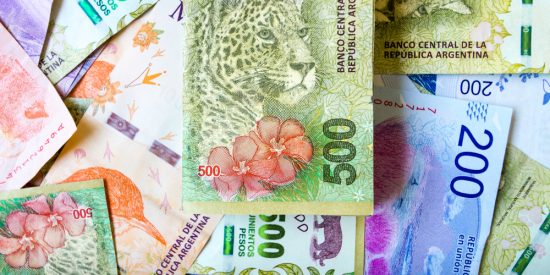
Simon Mayer / Shutterstock
Just a few years ago, it was worthwhile to bring crisp U.S. dollars in high denominations for exchange in Argentina rather than using an ATM card. The “blue dollar” market, which used to net you around 50% more pesos than the official rate, collapsed when the new government allowed the Argentine Peso (ARS) to be set by the market and not artificially inflated. Today, you’ll still find a slightly better rate exchanging cash, but it’s likely no longer worth the risk involved by carrying large amounts of cash.
This is all around good news for travelers, and at the time of writing, the peso has fallen to historical lows, which means U.S. dollars will have a lot of purchasing power in Argentina. While you can now use your credit card at high-end restaurants, hotels, and many larger shops without receiving an inflated exchange rate, you’ll still find it easier to get some pesos from an ATM for smaller purchases and to experience local steakhouses that may not accept credit cards. This is especially true if you are traveling in more rural areas of Patagonia or outside of Buenos Aires.
See our current airfares to Buenos Aires (EZE) from all over the U.S. and Canada
Mexico
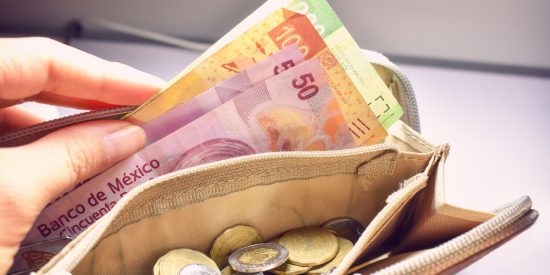
AleSalM / Shutterstock
According to the latest PYMNTS Global Cash Index™, almost half of Mexican households do not have a bank account and 90% of transactions are conducted with cash. The fact that roughly 50% of the population relies on cash only shows that the oldest form of payment is not going anywhere anytime soon. It will be fairly easy to get by using your card in most resort towns in Mexico, but if you want to support the locals or taste some spicy street tacos, you’re going to need some cash.
The U.S. dollar is widely accepted around Mexico, but is not recommend for small purchases since you will often receive change in Mexican Pesos (MXP), and it usually won’t be the best rate. It’s best to withdraw pesos from an ATM or exchange cash at a bank or casa de cambio (exchange house). Due to the volatility of the Mexican Peso, I’ve found that some accommodations will give you a discount or not charge taxes if you pay in U.S. dollars. For this reason, it is worthwhile to ask beforehand and to bring a fair amount of USD with you in case you can get a better rate.
See our current airfares to Cancun (CUN), Mexico City (MEX), and Puerto Vallarta (PVR) from all over the U.S. and Canada
China
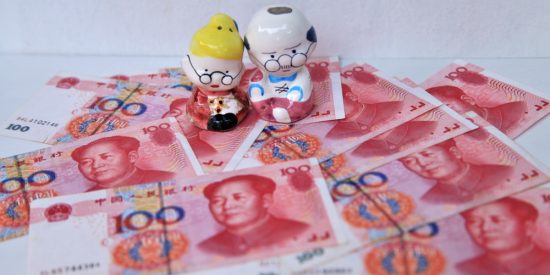
Iakkana Savaksuriyawong / Shutterstock
China’s youth have embraced new mobile payment methods such as WeChat and Alipay. Unfortunately, these payment methods do not support foreign credit or debit cards so foreigners visiting China will still have to rely on cash in order to make purchases from small shops or to enjoy some tasty soup dumplings in rural villages.
Don’t plan on being able to spend U.S. dollars in China, but you can withdraw Chinese Yuan (CYN) from ATMs in airports and around major tourist attractions. Not all foreign cards will work in all ATM machines so stick to the larger banks. It can also be difficult to find ATMs outside of major cities so make sure to take out all the cash you need before traveling to more remote locations in China.
See our current airfares to Beijing (PEK) and Shanghai (PVG) from all over the U.S. and Canada
India

yurakrasil / Shutterstock
At the end of 2016, in a battle to combat illicit activities and tax evasion, India’s government decided to make the old 500 and 1,000-rupee bank notes illegal. The result was chaos for millions of Indians who had to wait in extremely long lines to exchange the old banknotes for new ones before they became worthless. This is because India still relies heavily on cash for daily transactions. The government’s attempt to steer the economy away from cash transactions did not work and India’s cash as a share of GDP is already back to similar levels as before the demonetization with no signs of slowing down.
Outside of major transactions like hotel rooms and well-known tour operators, you’ll find it difficult to use a credit card around India. And even where credit cards are accepted, you may be able to get a better price by paying in cash. If you want to take a ride in a decorated rickshaw or indulge in the many different flavors of curry, make sure to take out some Indian Rupees (INR) from an ATM. You may still find long lines and ATMs running out of cash so be patient and ask your hotel for advice on where is best to withdraw or exchange for Rupees.
See our current airfares to Mumbai (BOM) and New Delhi (DEL) from all over the U.S. and Canada
Spain
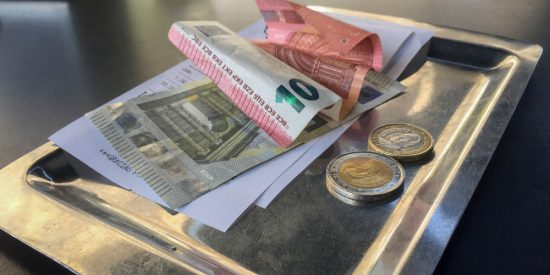
Philippe 1 bo / Shutterstock
Spain’s economy has been volatile in recent years and its citizens are not as confident in the banking system as in other European nations. This is evident in the way Spaniards prefer to spend cash than to use credit or debit cards for day-to-day purchases. Spain uses the Euro (EUR) and you’ll be able to get more for each Euro in Spain compared to other western European nations such as Germany or France.
U.S dollars are not accepted in Spain so grab some Euros from an ATM and pay for your tapas and sangria as the locals do, with cold hard cash. If you try to pay for a meal that is under 20 Euro with a credit card, you may get a bit of backlash from the waitstaff. And it’s always best to leave a small tip in cash rather than tipping on your credit card.
See our current airfares to Barcelona (BCN) and Madrid (MAD) from all over the U.S. and Canada
Thailand
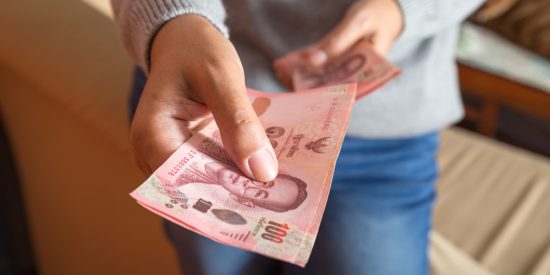
ewapee / Shutterstock
Flights to Southeast Asia are incredibly cheap these days. Along with the low cost of living, a trip to Thailand is one of the cheapest vacations you can take. You’ll find ATMs just about everywhere in Thailand where you can withdraw Thai Baht (THB) as needed. However, the fees are high for foreign cards so it’s best to avoid multiple ATM withdrawals if your bank will not reimburse ATM fees. If you’re comfortable carrying U.S. dollars to exchange, you’ll probably find better exchange rates and lower fees at one of the many places buying and selling foreign currencies.
Thailand is known for having some of the best cuisine in the world. Don’t try to pay with a card at a local food stall though. It will be necessary to have some baht on hand on a daily basis to eat, shop, and get around town in a tuk-tuk. It will be difficult to get change for large denomination notes so remember to break down your large bills at banks or large stores whenever possible so you can always pay with as close to exact change as possible.
See our current airfares to Bangkok (BKK) and Phuket (HKT) from all over the U.S. and Canada
I’ve highlighted just a few of the more popular destinations where you may find it difficult to get by on a credit or debit card alone. These tips can be used when traveling just about anywhere around the world. In brief, save your card for larger purchases and chain outlets, and make sure to have cash on hand in the local currency to pay for day-to-day purchases. The majority of businesses around the world will prefer to receive your payment in cash than any other method.
For the most up-to-date exchange rates, check out xe.com or download the app before you withdraw your cash from the ATM in a foreign country.
Featured image by isak55 via Shutterstock.






